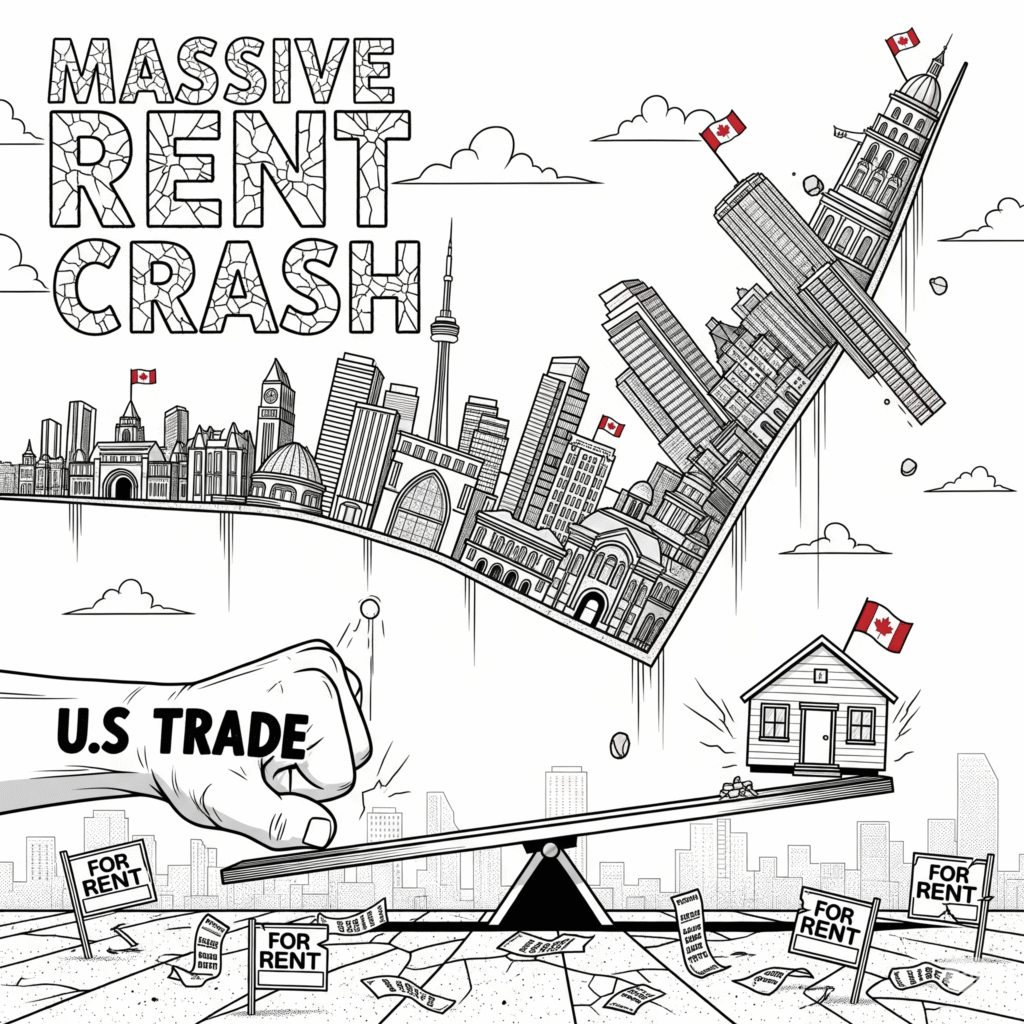
Overview
After three years of relentless post-pandemic rent surges, Canada’s rental market is finally giving tenants a breather. New analysis shows average asking rents declining year over year in more than half of Canadian cities, with the steepest drops in Vancouver and Toronto. Economists point to a cocktail of factors: weaker labor markets in trade-exposed regions, slower population growth after immigration cuts, and rental supply finally hitting the market. The throughline: trade tensions with the U.S. are intensifying an already-softening trend, especially in Ontario’s manufacturing belt.
RBC estimates average asking rents for two-bedroom units fell roughly $270 in Vancouver and $160 in Toronto in Q1 from a year earlier, with notable declines also in Kelowna, Calgary, and Halifax. That’s a stark reversal from the 2021–2023 period, when over a third of Canadian CMAs saw annual rent increases of at least 20% at some point. Labor-market fragility is visible in jobless rates: unemployment reached 6.9% nationally in July, 7.9% in Ontario, and 9.5% in the Windsor–Sarnia area—pain points concentrated in trade-exposed hubs.
Most Impacted Cities:
| City | Change in Average rent (2BR) |
| Vancouver | -$270 |
| Toronto | -$160 |
| Kelowna | -$230 |
| Calgary | -$170 |
Source: https://www.rbc.com/en/thought-leadership/economics/featured-insights/rent-retreat-canadian-tenants-catch-a-break/
Historical context
From mid-2021 through 2023, rents surged on the back of rapid population growth, brisk wage gains, and limited supply. At the peak, more than one-third of Canadian metropolitan areas recorded annual rent increases of 20% or more—a pace that was never sustainable as construction pipelines matured and affordability ceilings were met. The current cooling predates the latest bout of trade frictions, but tariff uncertainty and slower hiring in export-oriented sectors have amplified the downshift, especially in Ontario and B.C. Meanwhile, cities with large public-sector footprints, such as Ottawa, remain more insulated and even show rising rents amid otherwise softer conditions
What it means for renters, landlords, and policymakers
For renters: Negotiating leverage is improving in several big markets. Where supply has grown and local job markets softened, tenants can push for rent abatements, incentives, or better terms—particularly on two-bedroom units. Conditions are more mixed in smaller mid-sized markets where demand spillovers persist.
For landlords: Rate sensitivity is rising, and vacancy friction is reappearing. Owners relying on above-guideline increases will face stiffer resistance, especially as ownership affordability inches back and some renters consider buying if mortgage costs keep easing.
For policymakers: The supply push is working—slowly. Maintaining incentives for purpose-built rentals while managing immigration targets will be crucial to avoid snapping back to 2022-style overheating. Stabilization, not whiplash, should be the goal.
Outlook
RBC expects further rent moderation in the coming months given persistent labor-market weakness, slower population growth, and improving ownership affordability. That said, the overall rent burden remains elevated relative to pre-pandemic levels in most major cities, so “relief” is relative. Watch Ontario’s manufacturing corridor as a bellwether: if trade tensions deepen, expect continued softness in Hamilton, Oshawa, and Windsor; if tensions ease, declines may bottom as hiring stabilizes
